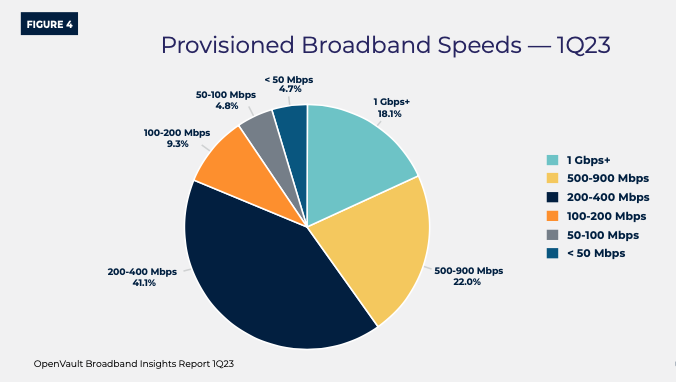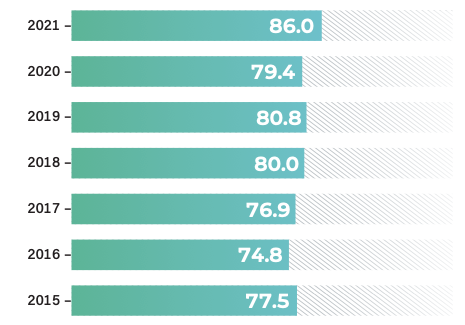Biden's $42 Billion Broadband Boondoggle
More than 90 percent of Americans already have access to high-speed internet.

President Joe Biden has rolled out his Broadband Equity, Access, and Deployment (BEAD) plan, which will be subsidized by $42 billion from the Infrastructure Investment and Jobs Act of 2021. That is an obscene amount of money to invest in technology that will be obsolete by the time it's built.
Nailing down internet service statistics is fraught, but let's look at various reports to get some idea of what's happening.
The stated goal of BEAD is to "connect everyone in America to reliable, affordable high-speed internet by the end of the decade." The billions in subsidies are being divvied up among the states and territories based on the number of households without access to broadband service. The administration estimates that 8.5 million households and small businesses are in areas without high-speed internet infrastructure.
BEAD defines high-speed internet service as a download speed of at least 25 megabits per second and an upload speed of 3 megabits per second (25/3 Mbps). This level of service enables users to check emails, browse the web, Zoom, and stream videos. BEAD defines "underserved" areas as those lacking access to 100/20 Mbps.
A 2022 report by America's Communication Association (ACA), which lobbies for more than 500 small- and medium-sized internet service companies, found that nearly 88 percent of households already live where at least two competitors offer 25/3 Mbps service, and 85 percent lived where at least one operator offers 100/20 Mbps service and a competitor offers 25/3 Mbps service. On current trends, the ACA projects that 95 percent will have access to at least 100/20 Mbps service by 2025.
In its January 2021 14th Broadband Report, the Federal Communications Commission found that nearly 90 percent of Americans had access to fixed terrestrial internet services at speeds of at least 25/3 Mbps in 2015. By 2019, that had risen to nearly 97 percent. In urban areas, those figures rose from 97 to 99 percent, and access to those speeds, even in rural areas, rose from 62 percent to 83 percent by 2019.
Citing more recent data, the technology data and management consultancy OpenVault in its first quarter 2023 report notes that 90.5 percent of American households are already signed up for internet download speeds of 100 Mbps or more.

"As usual, the politicians who wrote the rules for the BEAD and other federal grants are far behind the real-life curve," observes Doug Dawson, the president of communications consultancy CCG. "Grants that allow somebody to build a network that can deliver only 100 Mbps are investing in obsolete technology. By the time those grant networks are constructed, any new networks that deliver only 100 Mbps will be years behind the rest of the broadband in the country."
Providing access to high-speed internet services to the vast majority of Americans was not achieved by spreading around government largesse. The U.S. Telecom Association reports that private companies invested $86 billion in just 2021 (latest figures) to build out their broadband networks further.

In addition, US Telecom's broadband pricing index report notes that the real prices for both the most popular and the highest speed options have fallen since 2015 by 44.6 and 52.7 percent, respectively.
In other words, U.S. private broadband companies are already providing access to faster and increasingly cheaper internet services and, on current trends, will finish the job well before Biden's BEAD boondoggle gets off the ground.


Show Comments (44)